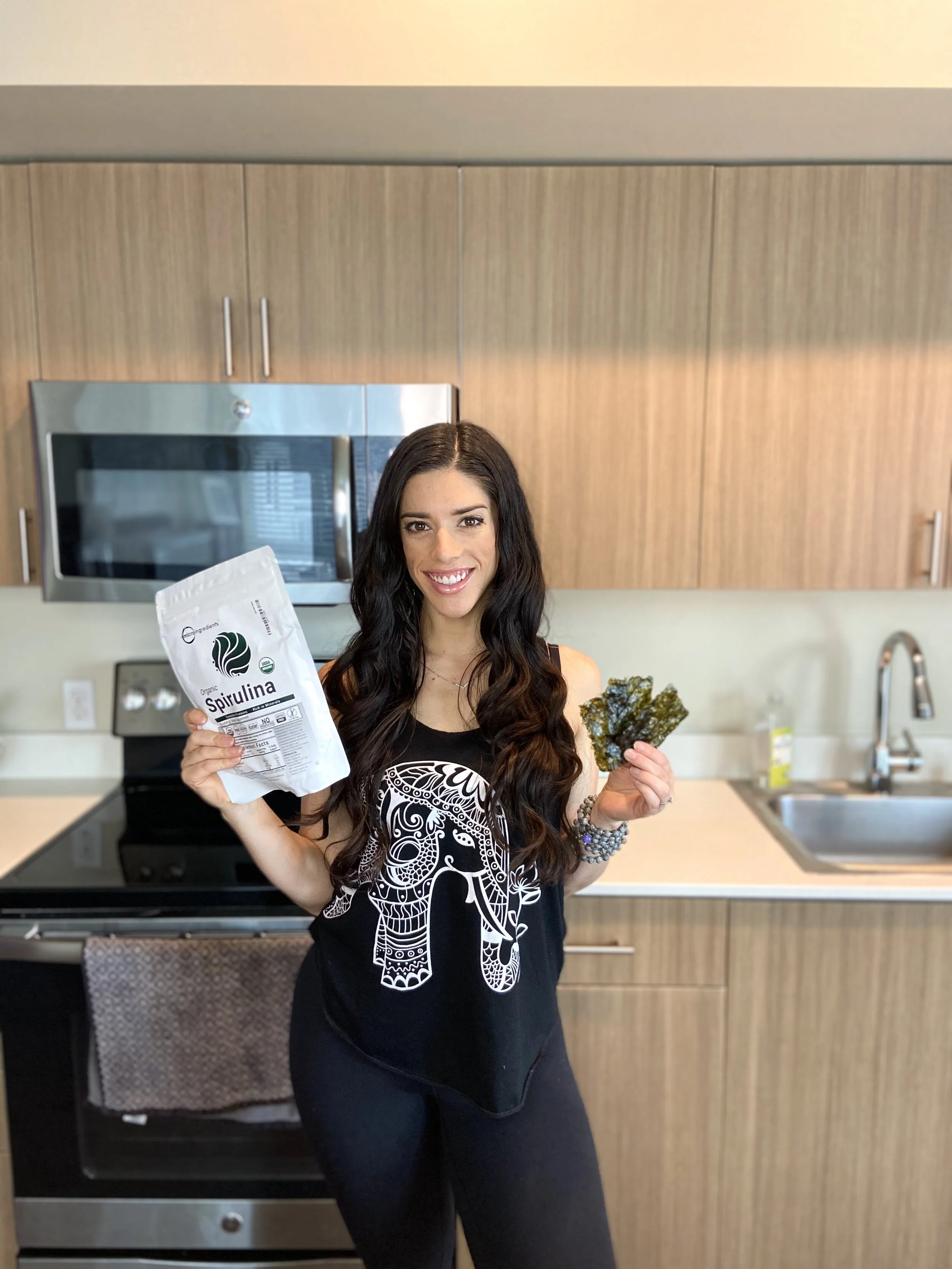One ingredient that’s not prevalent in American cooking is sea vegetables and algae. If you’re anything like me, the only seaweed you’ve ever eaten was in sushi.
However, marine vegetables have been in many culture’s cuisines for centuries. Seaweed is bursting with health benefits and is an easy, light, and delicious food to add into your cooking.
Here’s some cool things you need to know about sea veggies and how you can incorporate them into your diet.
Health Benefits
1. Supports heavy metal detoxification.
2. Major source of vitamins, antioxidants, omega-3 fatty acids, and minerals, especially iron, copper, potassium, magnesium, vitamins, A, B6, C, and E.
3. Source of iodine, which is often missing from our diets and can affect thyroid function.
4. Higher fiber content than fruits and vegetables.
5. Great prebiotic to support your good gut bacteria.
6. High protein content (Bonus: sea veggies are a complete protein, which means they are a protein source that contain all nine essential amino acids that your body can only get through your diet).
7. Increases energy.
8. Stabilizes appetite.
Types of Sea Vegetables & How To Incorporate Into Your Diet
There are many different types of edible sea vegetables. Marine vegetables range from single-cell algae to multicell organisms. Lauren Tanabe, Ph.D., interestingly points out that “these organisms aren’t plants, even though they resemble them. They have no root system because they’re able to absorb nutrients and water directly into their tissues.”
1. Kelp – typically what you see washing up on the beach. It is often used as a thickener in many products, but is also delicious in soups and stews, salads, or in seasonings.
2. Nori – this is the seaweed you find in sushi because it is great as a wrap, but it’s also a yummy snack in the crispy dried version.
3. Chlorella and spirulina (single-cell algae) – usually found powdered as our bodies aren’t able to break down the cell walls during digestion. Excellent source of protein and easily incorporated into a smoothie, sauce, or salad dressing.
4. Wakame – often found dried, you can rehydrate by soaking in water for around 10 minutes and use as a leafy green for salads or soups.
5. Kombu – difficult to digest, so it is often used to add umami flavoring in soup stock.
6. Dulse – beneficial for use in beauty products, such as scrubs and creams for glowing, exfoliated skin. It’s also been shown as a healthy, vegan alternative to bacon when fried.
7. Arame – with a sweeter, more mild flavor, arame is a good introduction to seaweed if you’re not a big fan of the flavor. First soak for around 5 minutes to rehydrate, then sautée with other veggies and a protein.
8. Hijiki – prepared and used in a similar way to arame, but it has a strong ocean flavor and takes longer to rehydrate (10 minutes) as it is thicker and courser.
When shopping for sea vegetables, it is very important to shop organic as they are absorbent, and can absorb heavy metals and contaminants. Organically raised seaweed will not be exposed to the toxins typically found in our polluted oceans. Also make sure they are clean and processed without toxic oils, additives, or preservatives.
I love seaweed and hope to incorporate seaweed into my routine more often. One way to easily add sea veggies into your diet and experience the health benefits is this organic kelp seasoning by Bragg’s!
If you have any great recipes that include seaweed, I would love to try them out and feature them on my blog! If you do, email me at jleahy@liveitupwellness.com.
My philosophy on health is that there is no one size fits all routine for anyone, and my program focuses on the needs of the individual. If you would like to learn more about nutrition and how to best care for your personal health needs, please send me a message to schedule a free 30 minute consultation!

![[Original size] Live It Up Wellness.jpg](https://images.squarespace-cdn.com/content/v1/59e4bdca64b05fe9e6c54e94/1580939604693-OP8O8CE6459AX1HGQUGW/%5BOriginal+size%5D+Live+It+Up+Wellness.jpg)



